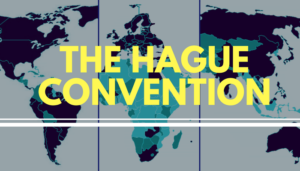Few things are more terrifying to a parent than the idea of their child being taken. Statistics show that the risks of the “stranger-danger” kidnapper have been inflated — and that children are far more likely to be taken by one of their parents. Some children are even abducted across national borders in the complicated and sometimes tragic world of child abduction.
Child abduction includes any unauthorized movement or detention of a child — most commonly, luring or coercing children to leave their homes or schools.
In 2014, there were 41,342 reports of missing children in Canada, according to the RCMP. Of these reports, 122 were for a parental abduction, while only 29 related to a stranger abduction.
From 1987 to 2014, the number of children reported missing per year in Canada has declined by more than 15,000, according to the Canadian Police Information Centre.
Between 2003 and 2012, Canada issued 64 Amber Alerts involving 73 abducted children. Of those, 70 were recovered and returned safely.
John Rabun, an American expert on infant abductions, recommends hospitals lock nurseries, monitor entrances with CCTV cameras, and provide electronic ankle tags to all babies to keep them safe from nursery abductions.
Hospitals in Quebec are investigating implementing this electronic tag system in nurseries across the province.
More than 460,000 children are reporting missing per year in the United States, according to the National Center for Missing and Exploited Children. In 97 per cent of these cases, the child is quickly recovered.
Less than one in four abductions is carried out by a stranger. In most cases, it is the non-custodial parent who will take the child, reports the U.S. Office of Juvenile Justice.
It also claims that one in four children who are abducted by parents or relatives will be murdered by their abductors.
Of all children reported missing in the United States, the Department of Justice says 99.8 per cent are located alive and unharmed. In almost every case, children reported missing were not abducted — they had either attempted to run away from home or had become lost.
A 1997 study from the office of the Attorney General of Washington State found that only around 100 American children per year were kidnapped by violent abductors but that those unlucky few had a 74 per cent chance of being killed within three hours of their abduction.
The Poly Klaas Foundation in the U.S. advises parents to take their children’s fingerprints in advance and provide them to law enforcement in the event of a stranger abduction.
American child-safety expert Gavin De Becker suggests children are vastly more likely to have a heart attack than to be abducted by stranger.
There are 93 states that are party to the Hague Abduction Convention, a multilateral treaty that ensures the prompt return of children who have been abducted, usually by a parent, from their country of residence to another nation.
Japan has frequently been a destination for international child abductors, in part due to a court system that treats custody as a private issue and a non-interventionist stance in international custody battles. There are reports of abducted children — usually by a parent — from Australia, France, Canada, the U.K. and the U.S. ending up in Japan.
A worldwide survey of Hague Convention international abduction cases found that 68 per cent of abducting parents were mothers taking their children between countries.
By Eric Stewart






